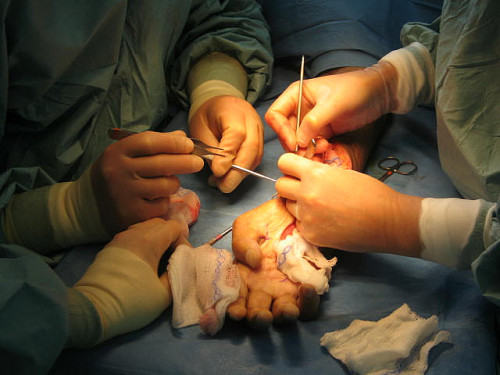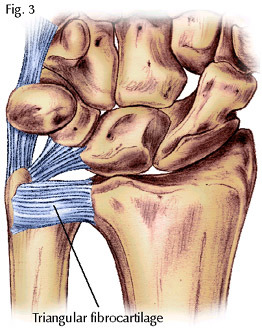1. 11% of patients undergoing arthroscopic release of elbow contracture experienced delayed-onset ulnar neuritis.
2. Pre-operative identification of heterotropic ossification, neurological symptoms, and decreased flexion extension arc were all found to be significant risk factors for the development of delayed-onset ulnar neuritis.
Evidence Rating Level: 3 (Average)
Study Rundown: Nerve injuries have been described following arthroscopic release of elbow contracture. One type, delayed-onset ulnar nerve neuritis (DOUN), has been reported after arthroscopic elbow release but only sparsely described. The authors of this paper sought to more systematically characterize DOUN and its clinical presentation. The study found that approximately 11% of patients who underwent release of elbow contracture developed DOUN and further subdivided such subjects into 3 distinct categories: rapidly progressive, slowly progressive, and non-progressive DOUN. The findings underscore the need for surgeons to maintain a high index of clinical suspicion for DOUN following arthroscopic elbow release. Early recognition is of particular significance for those with rapidly progressive DOUN who require immediate nerve transposition which, if not performed in a timely (<2 weeks post-surgery) manner, can manifest in a permanent neurological deficit. The authors were additionally able to identify three distinct pre-operative criteria in patients that were associated with significantly elevated risk for DOUN development post-surgery. Some deficiencies in the study include the single center, single surgeon design, which can limit applicability, as well as the evolution in surgical technique and approach over the 17 year duration of the study.
Riesgo de comienzo retardado de la neuritis cubital después de la liberación artroscópica de la contractura de codo
18 de julio 2014 Rehan Saiyed y Charles Carrier
1. El 11% de los pacientes sometidos a la liberación artroscópica de la contractura de codo experimentó el comienzo retardado de la neuritis cubital.
2. Identificación preoperatoria de osificación heterotópica, síntomas neurológicos, y la disminución de la flexión de la extensión del arco fueron encontrados para ser factores de riesgo para el desarrollo de comienzo retardado de la neuritis cubital.
Evidencia Nivel Rating: 3 (Normal)
Estudio Recorrido: Las lesiones nerviosas se han descrito después de la liberación artroscópica de la contractura del codo. Un tipo, el comienzo retardado de neuritis del nervio cubital (Doun), se ha reportado después de la liberación artroscópica del codo pero sólo escasamente descrito. Los autores de este trabajo trataron de caracterizar de forma más sistemática Doun y su presentación clínica. El estudio encontró que aproximadamente el 11% de los pacientes que se sometieron a la liberación de la contractura de codo desarrolló Doun y subdividir dichas asignaturas en 3 categorías diferentes: rápidamente progresiva y lentamente progresiva y no progresiva Doun. Los resultados subrayan la necesidad de que los cirujanos para mantener un alto índice de sospecha clínica para Doun siguiente comunicado de codo artroscópica. El reconocimiento temprano es de particular importancia para las personas con Doun rápidamente progresiva que requiere transposición del nervio inmediato que, de no realizarse en el momento oportuno (<2 semanas después de la cirugía), puede manifestarse en un déficit neurológico permanente. Los autores, además, capaz de identificar tres criterios preoperatorios distintas en pacientes que se asociaron con un riesgo significativamente elevado de desarrollo posterior a la cirugía Doun. Algunas deficiencias en el estudio incluyen el centro único, diseño único cirujano, lo cual puede limitar la aplicabilidad, así como la evolución en la técnica quirúrgica y el enfoque sobre la duración de 17 años del estudio.


 rls
rls






